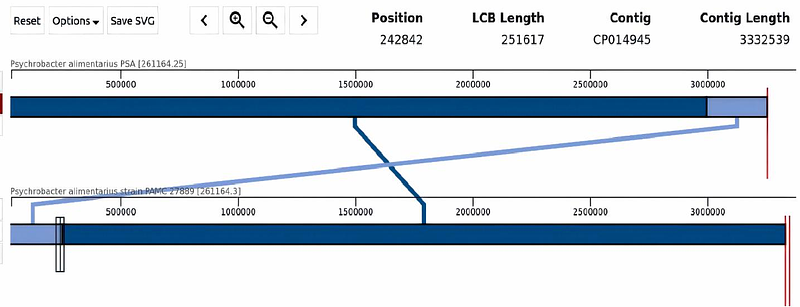Nanopore-Based Whole-Genome Sequencing Reveals a Bioluminescent and Non-Bioluminescent Bacterium Isolated from the Squid Loligo forbesi in the Red Sea.

Nanopore-Based Whole-Genome Sequencing Reveals a Bioluminescent and Non-Bioluminescent Bacterium Isolated from the Squid Loligo forbesi in the Red Sea.
Hassan, M. A.; Radwan, A. A.; Shawki, H. H.; Khattb, A. E.-N. A.
AbstractBioluminescence is a widespread phenomenon in marine organisms, often facilitated by symbiotic relationships with luminescent bacteria. In cephalopods, such associations have been extensively studied in species like Euprymna scolopes, yet little is known about other cephalopods, particularly those from the Red Sea. In this study, we isolated and characterized both bioluminescent and non-bioluminescent bacterial strains from the ink sacs and eyes of Loligo forbesii, a squid species collected from the Zaafarana region of the Suez Canal, Red Sea, Egypt. Using nanopore-based whole-genome sequencing, we identified two distinct bacterial strains: Psychrobacter alimentarius (bioluminescent) and Shewanella baltica (non-bioluminescent). Genome annotation revealed the presence of the alkanal monooxygenase (FMN-linked) gene, a key component of bacterial bioluminescence, within the P. alimentarius genome. Comparative genomic analysis, including ANI calculations and phylogenetic tree construction, confirmed a close relationship between the isolated P. alimentarius strain and publicly available reference genomes. Additionally, genome alignment using the Mauve tool demonstrated high sequence conservation between our P. alimentarius isolate and previously sequenced strains. Our findings contribute to the growing knowledge of cephalopod-associated bacterial communities and suggest that P. alimentarius may play a role in the bioluminescence of L. forbesii. This study expands our understanding of bacterial symbiosis in marine organisms and provides a foundation for further research into bioluminescent mechanisms in novel host-microbe interactions.